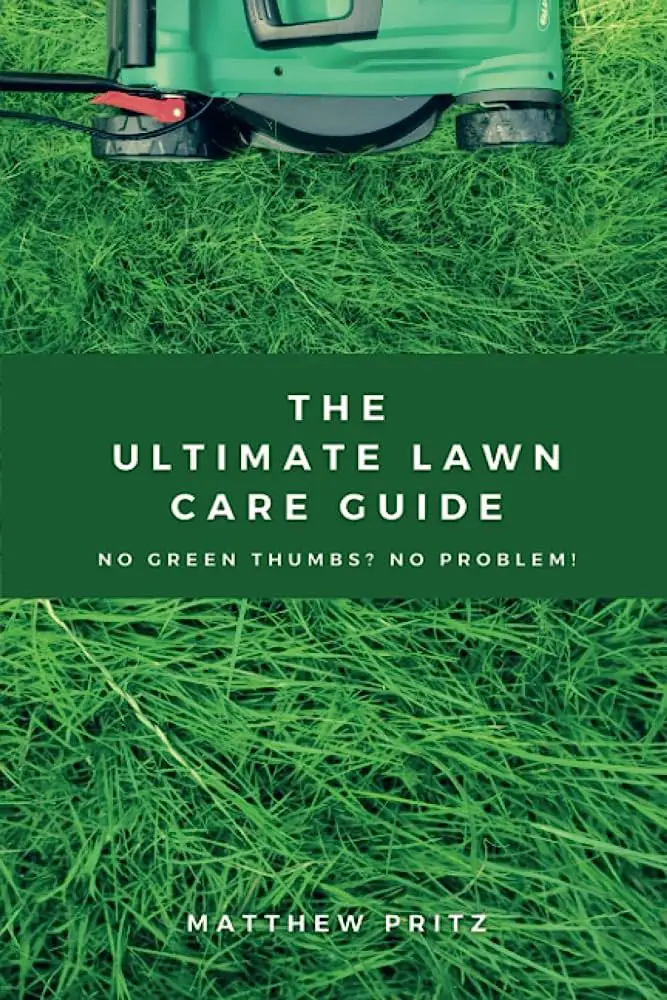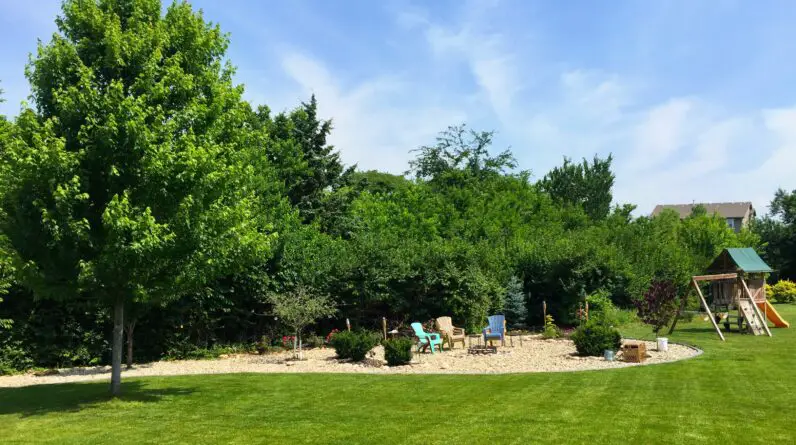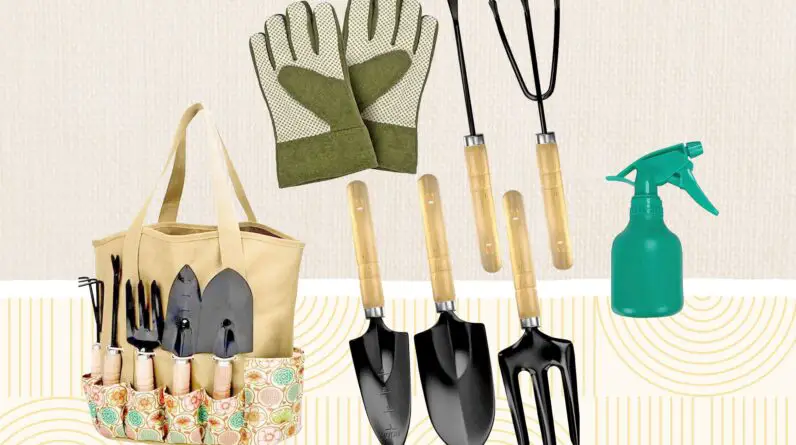
Introduction
Welcome to the Ultimate Guide to Lawn Care! In this comprehensive guide, we will walk you through everything you need to know about taking care of your lawn and landscaping. Whether you are a beginner or have some experience, our goal is to provide you with all the information and tips you need to maintain a lush and healthy lawn.
What is lawn care?
Lawn care refers to the maintenance and upkeep of your lawn and landscaping. It involves a variety of tasks such as mowing, watering, fertilizing, and weed control. Proper lawn care not only keeps your yard looking beautiful, but it also helps to prevent problems like disease, pests, and weed infestations.
Importance of proper lawn care
Why is proper lawn care important? Well, a well-maintained lawn offers more than just aesthetic appeal. It provides a space for you and your family to enjoy outdoor activities, increases your property value, and contributes to a healthier environment by reducing soil erosion and filtering pollutants.
Proper lawn care also involves proper watering techniques, regular mowing at the correct height, and regular fertilization to provide essential nutrients. It is important to understand that lawn care requires consistent effort and attention, but the results are well worth it.
Now that you understand the basics of lawn care and its importance, let’s dive into the details of each task in our Ultimate Guide to Lawn Care.

The Ultimate Guide to Lawn Care
Step 1: Assessing your lawn
Assessing your lawn is the first crucial step towards achieving a healthy and vibrant lawn. Understanding the unique characteristics of your lawn will allow you to tailor your lawn care practices accordingly. In this section, we will guide you through assessing your lawn by considering three main factors: soil type, lawn grasses, and sun and shade exposure.
Understanding your soil type
Determining your soil type is crucial as it directly affects water drainage and nutrient availability. Clay soils retain water for longer periods, requiring less irrigation, while sandy soils drain water quickly, necessitating more frequent watering. To determine your soil type, examine its texture and consistency. Sandy soil feels gritty and crumbly, while clay soil feels sticky and forms clumps. Loam soil, which is the ideal texture, feels soft and crumbly.
Identifying common lawn grasses
Identifying the grass species that make up your lawn is essential for proper care. Common warm-season grasses include Bermuda grass, St. Augustine grass, and zoysia grass, while popular cool-season grasses include Kentucky bluegrass, tall fescue, and perennial ryegrass. Understanding the specific needs and growth habits of these grasses will help you implement the appropriate maintenance practices.
Evaluating sun and shade exposure
Evaluate the sun and shade exposure your lawn receives throughout the day. Some grass species thrive in full sun, while others prefer partial shade. Observe which areas receive direct sunlight, partial shade, or full shade during different times of the day. This information will guide your decision-making when selecting appropriate grass species and determining watering and fertilization requirements.
Now that we have covered the first step of assessing your lawn, it’s time to move on to the next section where we will explore the importance of proper mowing techniques for a healthy lawn. Keep reading to discover more valuable tips and strategies for maintaining a lush and thriving landscape.

Step 2: Establishing a lawn care routine
When it comes to maintaining a healthy and vibrant lawn, establishing a lawn care routine is crucial. Having a set schedule and knowing the right techniques can make all the difference in achieving a lush and thriving lawn.
Mowing techniques for a healthy lawn
Proper mowing techniques play a vital role in the overall health of your lawn. It is important to mow your lawn regularly, but not too short. Cutting the grass too low can stress the plant and make it more susceptible to diseases and pests. Additionally, always make sure your mower blades are sharp to avoid tearing the grass, which can lead to browning and an uneven appearance. To promote healthy growth, vary your mowing pattern each time you mow and avoid removing more than one-third of the grass blade length at a time.
Watering schedules and techniques
Watering your lawn effectively is essential for its health. It is best to water your lawn deeply and less frequently rather than shallowly and frequently. This encourages the roots to grow deeper, making your lawn more drought-resistant. Water your lawn in the early morning to minimize evaporation and allow the grass to dry before the evening, which reduces the risk of disease. Use a sprinkler system or a soaker hose to ensure even coverage, and avoid overwatering, as it can lead to shallow root development and fungal diseases.
Fertilizing your lawn effectively
Fertilizing your lawn provides essential nutrients that promote healthy growth and vibrant green color. Choose a high-quality fertilizer with the right balance of nitrogen, phosphorus, and potassium for your specific grass type. Apply the fertilizer evenly using a spreader, following the product’s guidelines for the correct amount to use. It is best to fertilize your lawn in early spring and early fall, as this coincides with the periods of active growth. Be careful not to over-fertilize, as this can cause nutrient runoff and harm the environment.
By incorporating these mowing, watering, and fertilizing techniques into your lawn care routine, you will be well on your way to achieving a lush and beautiful lawn. Stay tuned for our upcoming sections, where we will delve deeper into weed control, pest management, and other essential lawn care practices.
Step 3: Dealing with common lawn issues
Dealing with common lawn issues is an essential part of maintaining a healthy and beautiful lawn. We understand that it can be frustrating to see your lawn being overrun by weeds, plagued by pests and diseases, or damaged in certain areas. That’s why in this step, we will guide you through the process of identifying and controlling weeds, managing pests and diseases, and repairing bare spots and damage.
Identifying and controlling weeds
Weeds are a common problem in most lawns, and controlling them is crucial to maintain a lush and green landscape. We will help you identify different types of weeds and provide effective strategies to eliminate them. From hand-pulling to using herbicides, we will give you practical tips to keep those pesky weeds at bay and allow your grass to thrive.
Managing pests and diseases
Pests and diseases can wreak havoc on your lawn if left unchecked. In this section, we will help you identify common lawn pests and diseases and provide guidelines on how to manage and eradicate them. From using organic pest control methods to implementing disease-resistant grass varieties, we will share our expertise to help you protect your turf.
Repairing bare spots and damage
Every lawn can experience bare spots or damage from foot traffic, pets, or extreme weather conditions. We will walk you through the process of repairing these areas, ensuring that your lawn remains healthy and visually appealing. From overseeding to patching techniques, we will provide you with step-by-step instructions to restore the beauty of your grass.
By following our comprehensive guide, you will gain the knowledge and skills to effectively deal with these common lawn issues, allowing your landscape to thrive and impress.

Step 4: Maintaining a lush and green lawn
Now that you have done all the hard work of preparing and mowing your lawn, it’s time to focus on maintaining its lush and green appearance. In this step, we will explore aerating and overseeding, topdressing, and keeping your lawn neat and attractive.
Aerating and overseeding for optimal growth
Aerating is a process that helps your lawn breathe by creating small holes in the soil. This allows nutrients, water, and air to penetrate deep into the roots, promoting optimal growth. After aerating, overseeding is essential to fill any thin or bare spots. By spreading new grass seed over the existing lawn, you ensure a thick and uniform turf.
Topdressing for improved soil quality
Topdressing involves applying a thin layer of compost or topsoil over your lawn. This promotes better soil structure, improves moisture retention, and provides essential nutrients. It also helps to level out uneven areas and can reduce thatch buildup. Regular topdressing helps to maintain a healthy and vibrant lawn.
Keeping your lawn neat and attractive
Maintaining a neat and attractive lawn involves regular mowing, edging, and trimming. Be sure to adjust your mower height to the correct setting and mow in alternate directions to avoid creating ruts. Edging along the sidewalks and flower beds gives your lawn a clean and polished look. Regular trimming of shrubs and trees keeps your entire landscape looking well-maintained.
With proper maintenance, your lawn will continue to thrive and be the envy of the neighborhood. So, put these maintenance tips into practice and enjoy a beautiful and healthy lawn year-round.

Step 5: Environmental considerations
Taking care of your lawn goes beyond simply making it look beautiful. It also involves being mindful of the environment and making choices that reduce our carbon footprint. In this section, we will provide you with valuable tips on water conservation, choosing eco-friendly lawn care products, and reducing your carbon footprint in lawn care.
Water conservation tips
Water is a precious resource, and it is essential to use it wisely. Here are some tips to conserve water and ensure your lawn stays healthy:
- Water your lawn early in the morning or late in the evening to prevent evaporation.
- Adjust your sprinkler system to avoid watering sidewalks and driveways.
- Consider installing a rain barrel to collect and use rainwater for your lawn.
Choosing eco-friendly lawn care products
When it comes to maintaining your lawn, it’s important to choose products that are environmentally friendly. Look for organic fertilizers, natural pest control methods, and biodegradable weed killers. These alternatives are not only safer for the environment but also promote the health of your lawn and reduce the risk of chemicals seeping into the ground.
Reducing carbon footprint in lawn care
Lawn care activities can contribute to carbon emissions. To reduce your carbon footprint, consider the following:
- Opt for manual lawn tools instead of gas-powered equipment.
- Use a push mower instead of a gas mower.
- Consider planting trees or shrubs to absorb carbon dioxide and provide shade.
By implementing these environmental considerations in your lawn care routine, you are not only preserving the beauty of your lawn but also contributing to a cleaner and healthier environment for future generations. So, let’s take conscious steps towards sustainable lawn care practices – for us and for our planet.
Step 6: Advanced lawn care techniques
If you’ve mastered the basics of lawn care, it’s time to take your skills to the next level with these advanced techniques. Implementing smart irrigation systems is a great way to optimize water usage and ensure your lawn stays healthy without wasting resources. By using weather sensors and smart controllers, you can easily adjust irrigation schedules based on current weather conditions, saving you both time and money.
Another technique to consider is using organic lawn care methods. These environmentally friendly practices focus on nurturing the soil and promoting natural balance, resulting in a healthier and more sustainable lawn. From composting to using organic fertilizers, you’ll be amazed at the positive impact it can have on your lawn’s overall health.
Incorporating landscape design can also play a significant role in enhancing your lawn’s beauty and functionality. By strategically placing trees, shrubs, and flowers, you can create focal points, add privacy, and increase the curb appeal of your property. Additionally, well-designed pathways and outdoor living spaces can provide a welcoming and relaxing environment.
By implementing these advanced lawn care techniques, you’ll have the knowledge and tools to take your lawn to the next level. From optimizing water usage to promoting environmental sustainability and enhancing aesthetics, these methods will help you achieve a healthy and beautiful lawn that you can be proud of. So, let’s get started and make the most of your outdoor space!
Conclusion
We hope that this ultimate guide to lawn care has provided you with valuable information and tips to help you achieve a beautiful and well-maintained lawn. Proper lawn care offers numerous benefits that go beyond just enhancing the visual appeal of your property.
The benefits of proper lawn care
Maintaining a healthy and vibrant lawn not only improves the aesthetics but also creates a welcoming environment for you and your family. A well-cared-for lawn enhances the curb appeal of your home, increasing its value and making it more attractive to potential buyers. Furthermore, a lush lawn acts as a natural air purifier, trapping dust and pollutants while producing oxygen. It also absorbs rainfall, preventing soil erosion and reducing stormwater runoff.
Maintaining a beautiful lawn year-round
To ensure year-round beauty, proper lawn care must be practiced consistently. This includes regular mowing, fertilizing, watering, and weed control. Additionally, maintaining proper grass height, aerating the soil, and overseeding bare patches are essential steps. It is crucial to understand the specific needs of your grass type and climate to tailor your lawn care routine accordingly. Taking proactive measures to prevent common lawn problems, such as pest infestations and disease, will also contribute to a healthy and lush lawn.
Remember, lawn care is an ongoing process that requires patience, dedication, and knowledge. By following the advice and techniques outlined in this guide, you will be well on your way to achieving and maintaining a beautiful lawn that you can enjoy all year long. Happy lawn care!





